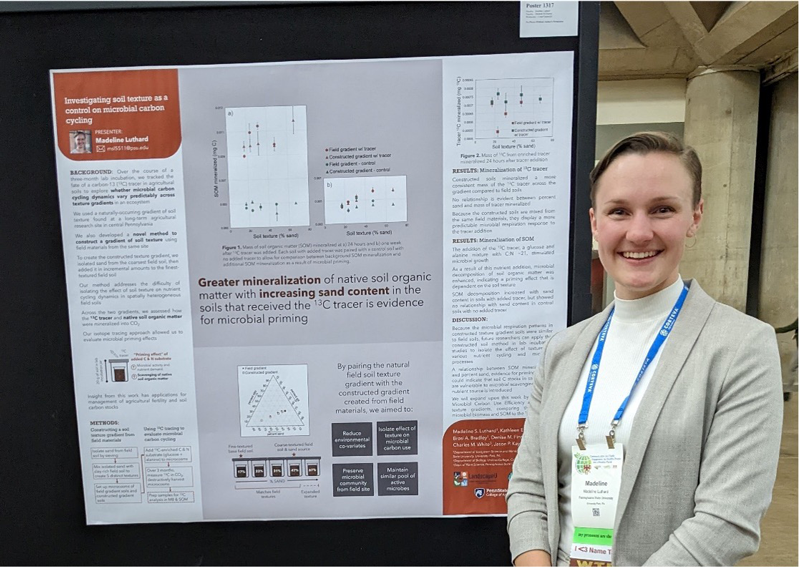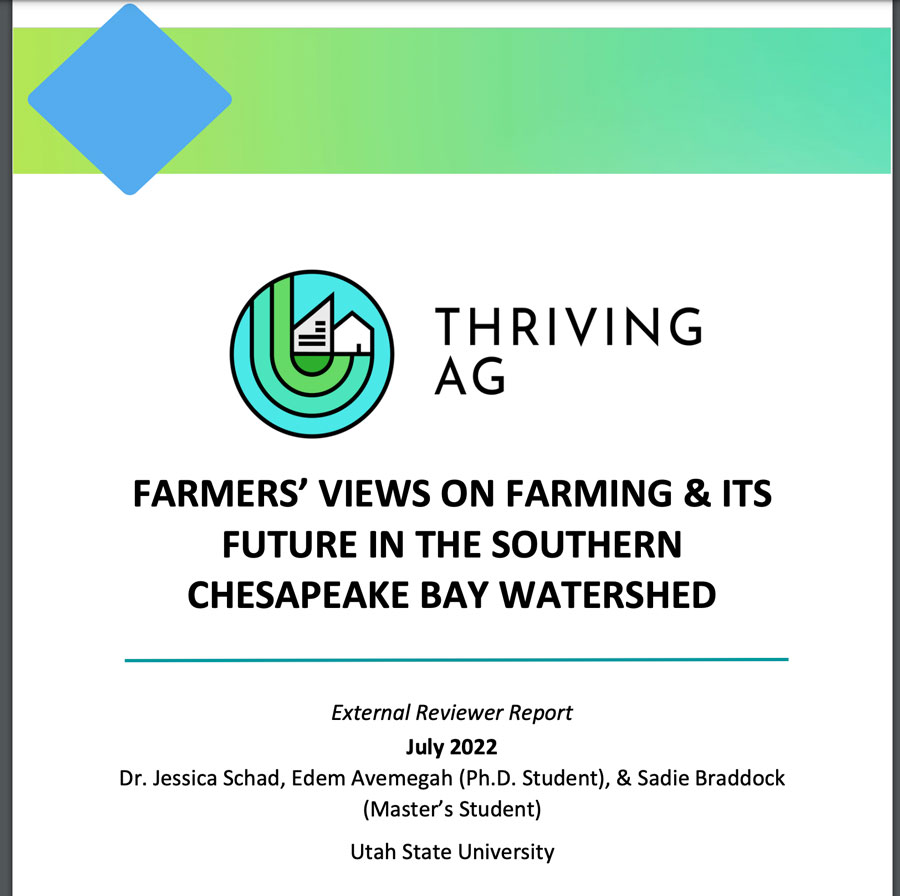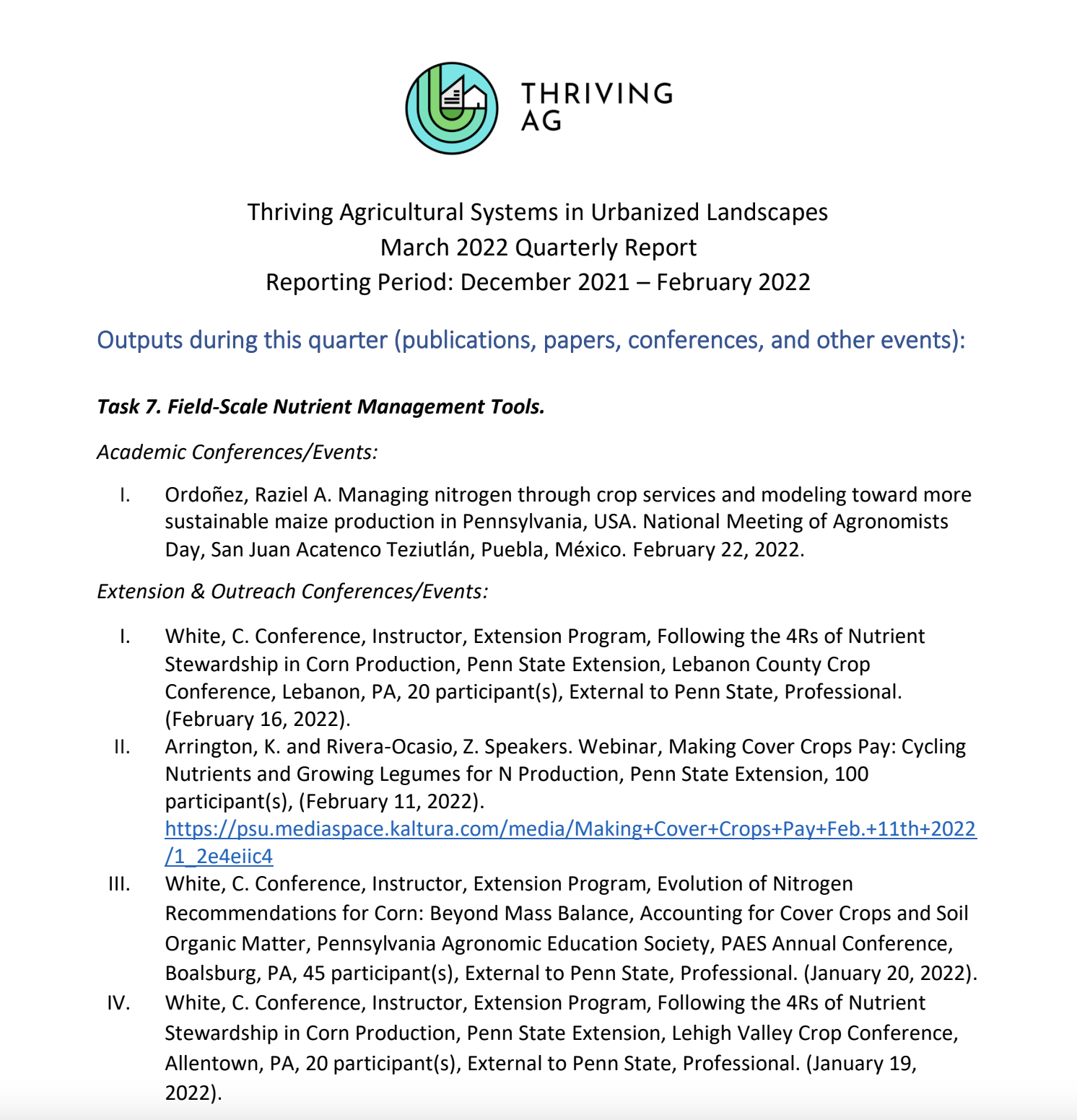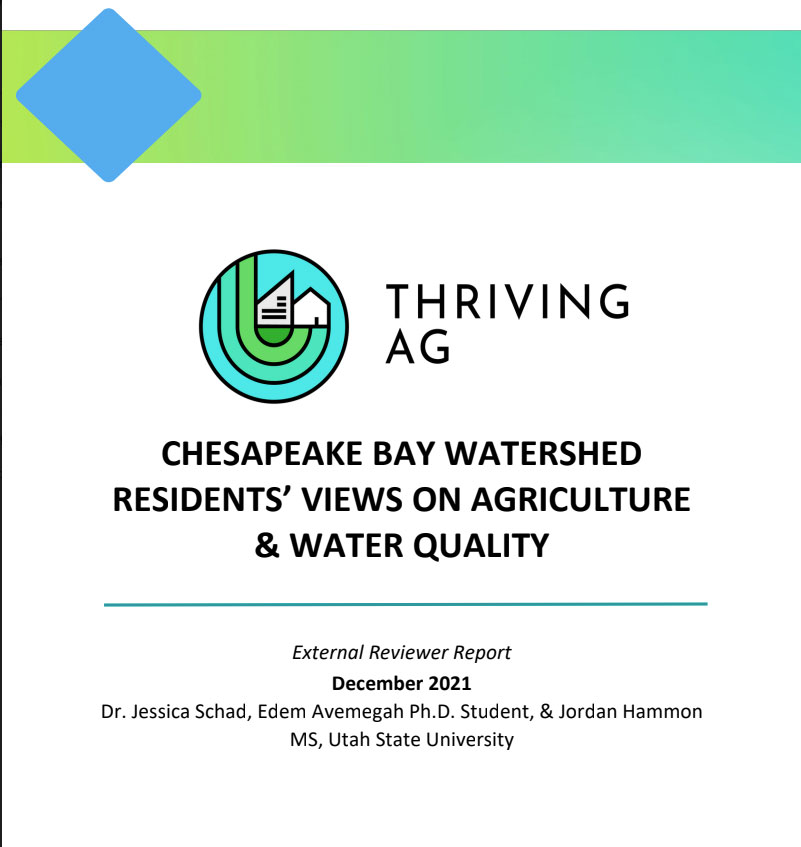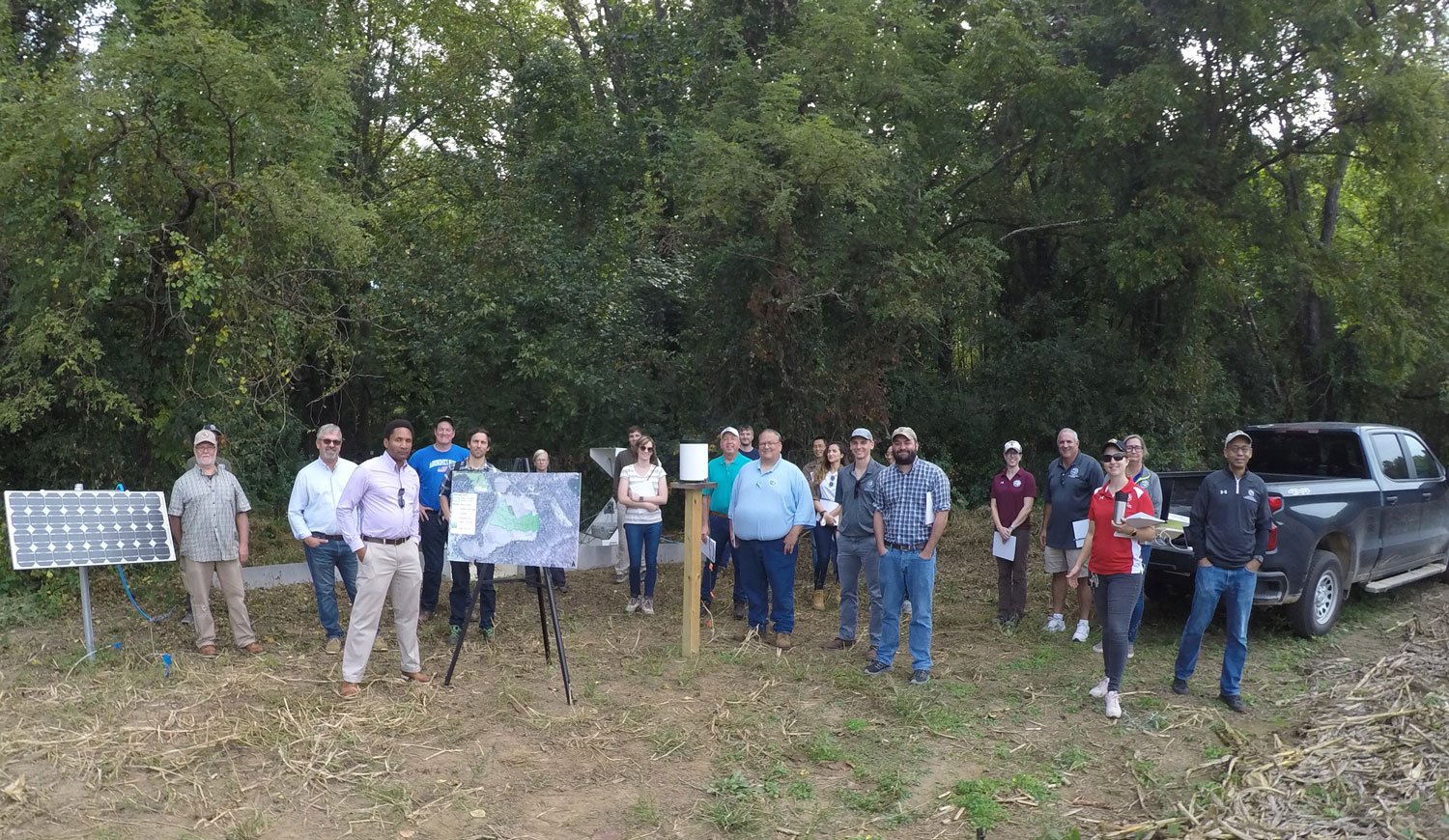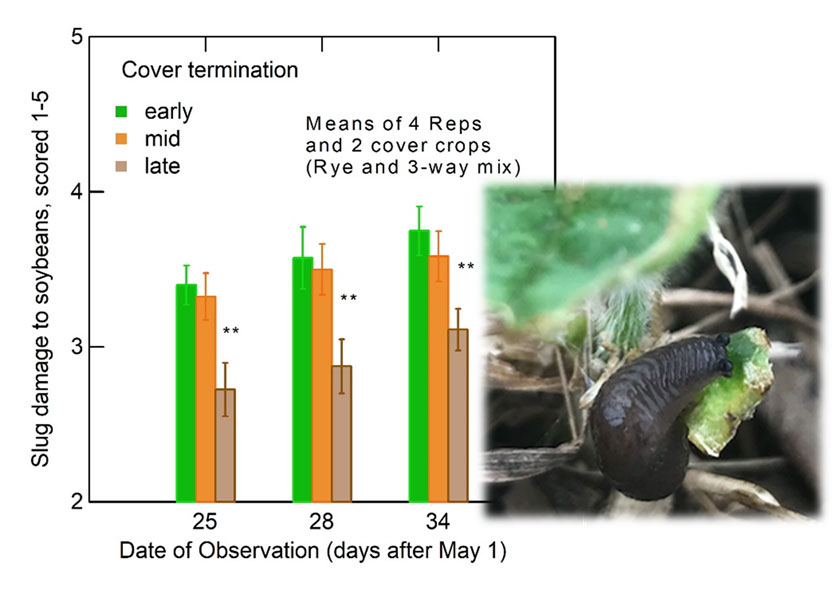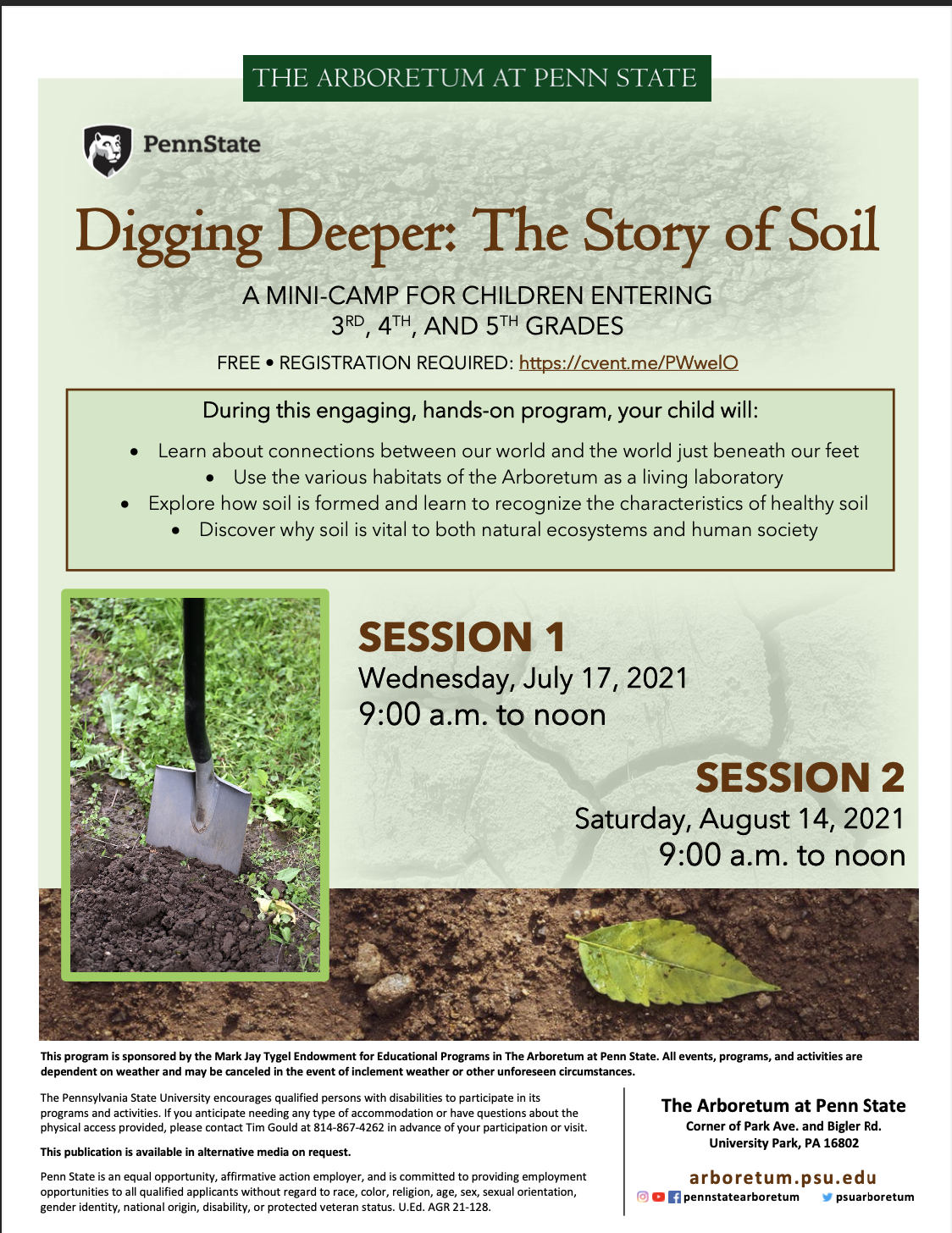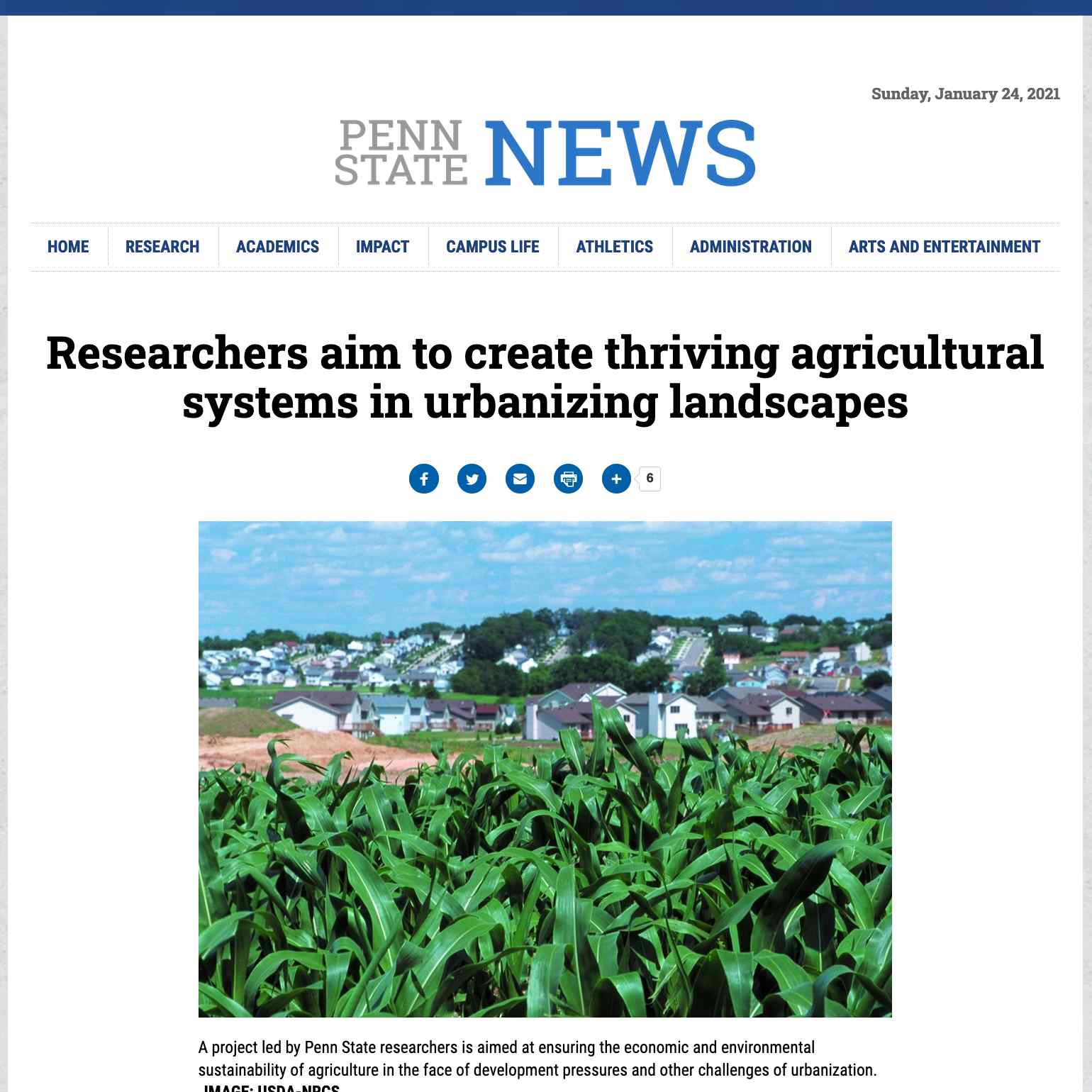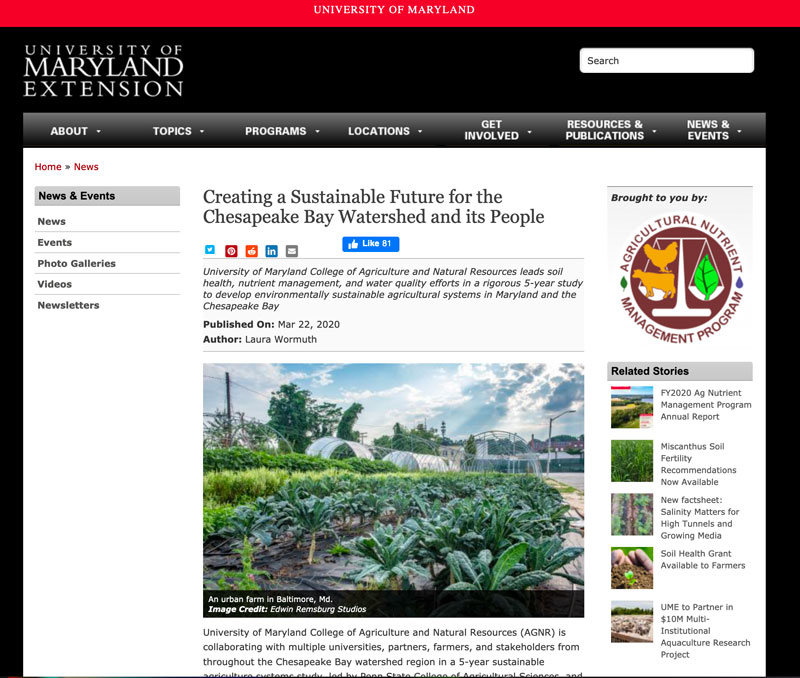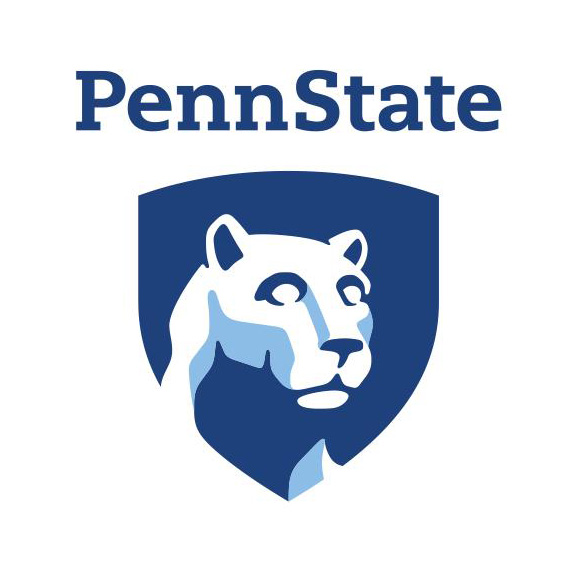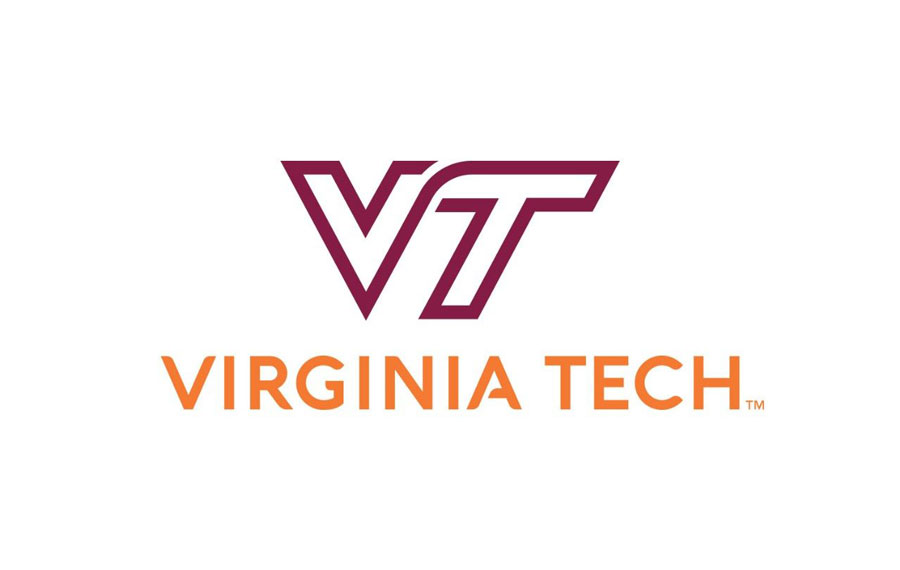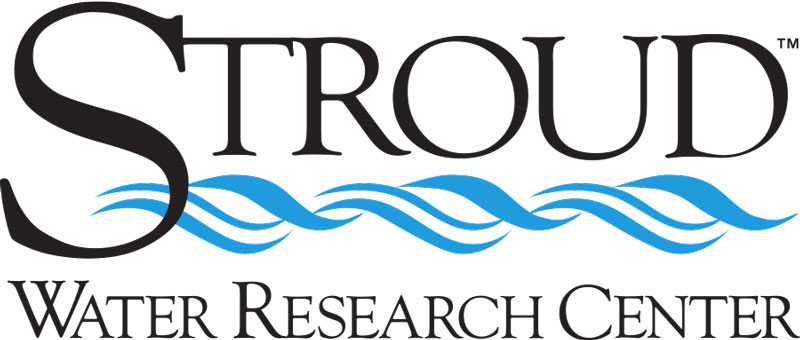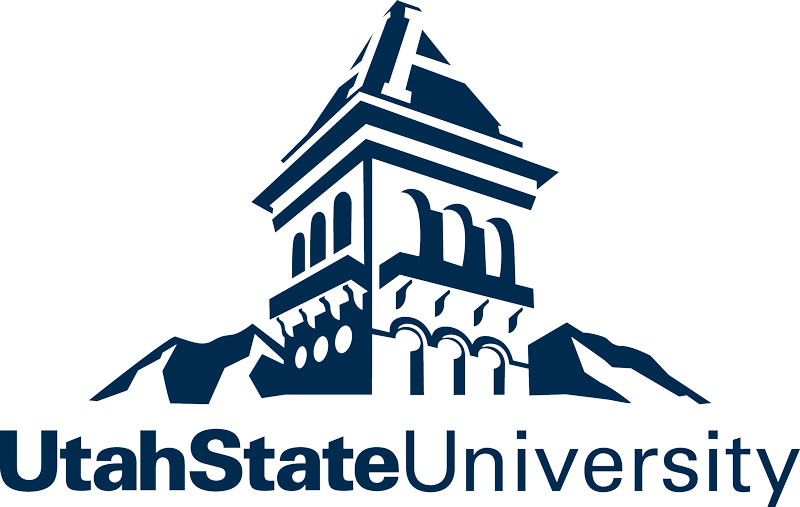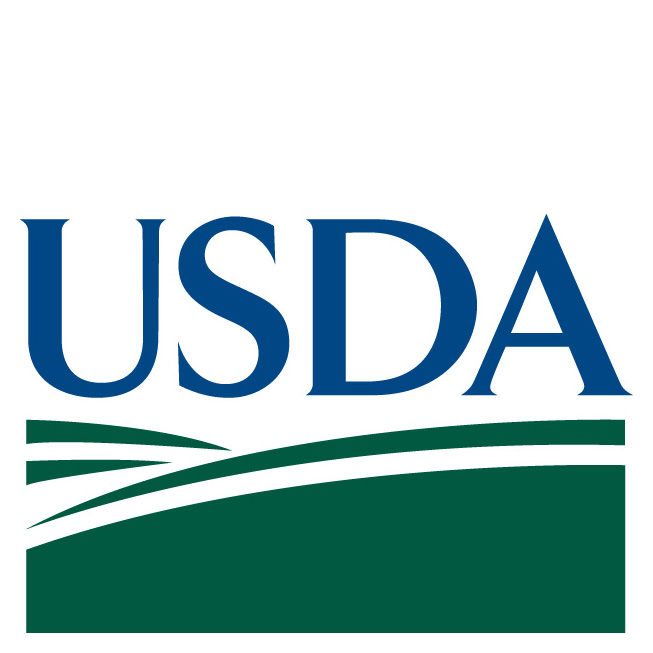Consumers’ willingness to pay for local foods across different urban-rural landscapes
Consumers’ willingness to pay for local foods across different urban-rural landscapes
Author: Chiu-Lin Huang
Task 5 Team completed an experiment this August to assess consumers’ willingness to pay (WTP) for local foods across different urban-rural landscapes. To validate the results obtained from scanner data, the team designed a lab-in-the-field experiment. This experiment investigated how different interpretations of “local”—whether produced locally or predominantly sold locally—affect purchasing decisions among supermarket shoppers in urban and rural Pennsylvania. The experiment was conducted at two supermarkets owned by the Giant Company: a Giant supermarket in Huntingdon, PA, and a Martin’s supermarket in Altoona, PA. It aimed to elicit consumers’ actual WTP for local and non-local potato chips. On average, consumers in rural area (Huntingdon) are willing to pay 10 percent more for local potato chips. In urban area (Altoona), however, while consumers are willing to pay slightly more for local potato chips than for non-local ones, this difference is not statistically significant. This finding aligns with earlier project results, which indicated that consumers in more rural or agricultural areas tend to have higher WTP values for local food. Importantly, the alternative definitions of “local”—one defined by the area of production and the other by the predominant area of sales—did not significantly impact WTP for local chips. While urban consumers in Altoona demonstrated a higher WTP for non-local potato chips, and rural consumers in Huntingdon showed a willingness to pay a premium for local chips, there was no significant difference in local premiums between urban and rural areas under either definition of “local.”
Thriving Ag Project: December 2023 Progress Report
Thriving Ag Project: December 2023 Progress Report
Check out what the Thriving Ag Project team has been up to the past quarter in the latest Quarterly Report.
Read moreThriving Ag Project: August 2023 Annual Report
Thriving Ag Project: August 2023 Annual Report
The Thrving Ag Project's 2023 Annual Report is now available. Find out what the team has been up to during project year 4.
Read moreResearch Briefs on Chesapeake Bay Watershed Residents' and Farmers' Views, Perceptions, and Concerns
Research Briefs on Chesapeake Bay Watershed Residents' and Farmers' Views, Perceptions, and Concerns
Thriving Ag project team members Edem Avemegah and Jessica Schad, who are on the project's External Evaluation Team, created the following research briefs:
Chesapeake Bay Watershed Residents’ and Farmers’ Concerns and Perceptions of Water Quality, Edem Avemegah and Jessica D. Ulrich-Schad
Chesapeake Bay Watershed Residents’ and Farmers’ Views on Urban and Suburban Growth, Edem Avemegah and Jessica D. Ulrich-Schad
Chesapeake Bay Watershed Residents’ and Farmers’ Views on Water Quality, Edem Avemegah and Jessica D. Ulrich-Schad
Read moreThriving Ag Project: June 2023 Quarterly Update Report
Thriving Ag Project: June 2023 Quarterly Update Report
The Thriving Ag Project's June 2023 Quarterly Report can now be viewed by clicking the button below.
Read moreResearch brief: "Chesapeake Bay Watershed Residents’ and Farmers’ Views on Water Quality"
Research brief: "Chesapeake Bay Watershed Residents’ and Farmers’ Views on Water Quality"
Thriving Ag project team members Edem Avemegah and Jessica Schad, who are on the project's External Evaluation Team, created a research brief, "Chesapeake Bay Watershed Residents’ and Farmers’ Views on Water Quality". You can view the research brief by clicking on the button below.
Read moreRepresenting Thriving Ag at the 2022 ASA-CSSA-SSSA Annual Meeting
Representing Thriving Ag at the 2022 ASA-CSSA-SSSA Annual Meeting
Author: Madeline Luthard
In November of 2022, I had the opportunity to attend the ASA-CSSA-SSSA International Annual Meeting in Baltimore, MD. Between the three societies – the American Society of Agronomy (ASA), Crop Science Society of America (CSSA), and Soil Science Society of America (SSSA) – which are fondly referred to as the “Tri-Societies”, this conference brings together thousands of researchers and industry professionals each year. For 2022, the meeting’s emphasis was “Communication and Public Engagement for Healthy People and a Healthy Planet.”
As a student who began my graduate coursework in the fall of 2020 and experienced much of my first two years at Penn State in virtual classes and meetings, I was thrilled to attend my first in-person research conference this past fall. A group of graduate students, postdocs, and undergraduates from our lab group made the drive from State College, PA to Baltimore. Once we arrived, we filled our schedules with research talks and symposia, as well as professional development activities, creative outlets (including soil painting and an art contest), and networking opportunities.
I presented a poster and five-minute flash talk titled, “Investigating soil texture as a control on microbial carbon cycling.” In the poster and flask talk, I shared results from a project that is supported in part by the Thriving Ag Project as a component of ongoing work by Task Team 7 – Field Scale Nutrient Management Tools. I was honored that my poster was awarded 1st place in the graduate student competition for the Soil Biology and Biochemistry Division. Overall, my experience at the Tri-Societies meeting was incredibly enriching, and I was inspired to learn about more ongoing research that is complementary to and in alignment with the goals of the Thriving Ag Project. I look forward to future professional conference meetings and more opportunities to represent the Thriving Ag team!
Thriving Ag. team members published in Conservation Biology
Thriving Ag. team members published in Conservation Biology
Team members Dan Read and Lisa Wainger recently published a paper in Conservation Biology titled "Assessing intervention effectiveness at promoting voluntary conservation practice adoption in agrienvironments". You can read the article here: https://conbio.onlinelibrary.wiley.com/doi/10.1111/cobi.14009
Read moreEvaluating water quality benefits of manureshed management in the Susquehanna River Basin
Evaluating water quality benefits of manureshed management in the Susquehanna River Basin
Author: Marali Kalra & Cibin Raj
Livestock manure is a valuable source of agricultural nutrients. However, manure source areas are often geographically disconnected from agricultural fields in need of fertilizer. The concept of the manureshed, which connects manure sources with agricultural fields in need of nutrients, is a helpful tool for managing manure distribution. A manureshed (analogous to a watershed) is the land area that receives manure from a specific source, when manure is applied at a rate that meets crop nitrogen or phosphorus needs. The manureshed approach allows for better nutrient budgeting on a regional scale, but its effects on stream water quality are not well understood. Excessive or untimely manure application can increase nitrogen and phosphorus concentrations in runoff from agricultural fields, which leads to downstream eutrophication. This type of nutrient pollution is of particular concern in estuaries such as the Chesapeake Bay watershed, which receives water from highly agricultural regions in the surrounding states. Our study uses the Soil and Water Assessment Tool (SWAT) to examine the water quality impacts of manureshed management in the Susquehanna River Basin, a major tributary of the Chesapeake Bay.
We devised a scenario-based modeling study to evaluate various manureshed management scenarios in the Susquehanna River Basin. We formulated six scenarios (including a baseline), involving variations in crop nitrogen and phosphorus demand, to compare the impacts of different manureshed management strategies. Simulation results showed improved manure nutrient use efficiency and significant water quality benefits with manureshed-based manure management, especially when manure application was based on crop phosphorus demand. A nutrient-balanced manureshed scenario, where manure was transported from source to sink areas, also reduced the agricultural nutrient contribution from the Susquehanna River Basin to the Chesapeake Bay. Impacts on local streams in livestock-intensive areas were even more pronounced. We conclude that manureshed management, in combination with existing nutrient management plans, can aid in protecting streams around concentrated animal feeding operations.
Original article: https://acsess.onlinelibrary.wiley.com/doi/10.1002/jeq2.20429
Read moreCircular Agriculture: Reutilizing Nutrients from Waste in the Chesapeake Bay Watershed
Circular Agriculture: Reutilizing Nutrients from Waste in the Chesapeake Bay Watershed
Author: Whitney Lisenbee
Circular systems have become a rising area of research in agriculture. The goal is to reduce and recycle waste streams for both environmental and economic benefits. In the agricultural regions of the Chesapeake Bay watershed, manure waste can be reutilized as a source of organic fertilizer for crops. Manure is currently constrained by transportation and storage limits but our study investigates what if manure could be transported further from the source? Is there enough cropland to utilize all the manure produced in the region?
Additionally, humans produce excess food waste that typically ends up in landfills where it produces significant greenhouse gas emissions. This waste could be composted to serve as another form of nutrients for cropland instead. We studied the production and application of food waste compost as an additional source of organic fertilizer along with manure.
We found that current manure production is applied to 16% of cropland in the Susquehanna River Basin, the largest agricultural watershed draining to the Chesapeake Bay. However, almost half of that is applied at levels higher than recommended due to transportation constraints. With improved transportation, 17% of cropland was able to apply manure at the recommended rate. Finally, food waste compost was able to double the amount of “circular” cropland by providing organic fertilizer to an additional 16% of cropland (for a total of 33%), typically in areas where manure was not available.
Circular agricultural strategies such as these provide many benefits e.g., reduced emissions, improved soil health, and reduced nutrient imports. However, we found that increased circularity could have a negative effect on water quality due to higher nitrogen application rates with organic fertilizers. Therefore, to continue decreasing nutrients reaching the Chesapeake Bay, nutrient-reducing conservation practices and nutrient management plans must accompany these circular agricultural practices.
Impacts of Energy Price and Ethanol Demand Shocks on U.S. Agriculture
Impacts of Energy Price and Ethanol Demand Shocks on U.S. Agriculture
Authors: Chenyang Hu, Darrell Bosch, and Wei Zhang
Pressure for reducing carbon emissions and increasing reliance on renewable fuels may give rise to higher and more variable energy prices in the future. Higher energy prices and potential higher demand for ethanol might have important implications for agriculture, an energy-intensive industry. Our study examines the possible implications for U.S. agriculture of increases in energy prices and demand for ethanol.
We find that higher energy prices lead to higher crop prices and lower crop output. Crop acres including corn decrease in most farm regions with the exception of Northern Plains. Livestock production tends to decline in response to higher energy costs. Total livestock value tends to increase reflecting that reduced output is more than offset by higher prices. The regional distribution of the value of livestock changes very little in response to energy price increases.
Higher ethanol demand for domestic use and for export leads to expansion of corn production but reduction of feed grain sorghum. Crop output increases the most in the Corn Belt which has the largest share of corn. Livestock production tends to increase in response to higher ethanol demand due to the increased availability of by-products used for animal feed. Total livestock value tends to decrease as price decreases offset the effects of increased output.
The vulnerability of agricultural enterprises to energy price increases varies by enterprise and region depending on their energy intensity and region where production occurs. Increases in demand for ethanol have important direct effects by expanding corn acreage, but also have indirect effects on the relative profitability and price of livestock enterprises through the availability and price of ethanol by-products. Farmers, farm advisors, lenders, input suppliers, and policymakers need to be aware of these effects and be well prepared to anticipate the effects of possible energy price increases and ethanol policy changes.
Farmers’ Views on Farming & Its Future in the Southern Chesapeake Bay Watershed
Farmers’ Views on Farming & Its Future in the Southern Chesapeake Bay Watershed
As part of the external evaluation of the Thriving Ag Project, researchers from Utah State University conducted an online survey of farmers predominantly in the southern half of the Chesapeake Bay Watershed (CBW) on their views of agriculture during the summer of 2022. Similar to a survey of residents of the CBW conducted in 2021, the online and mail survey asked about respondents’ levels of awareness of and views on water quality issues in local streams and waterways and the Chesapeake Bay in general. Questions also investigated agricultural producers' perceptions of causes of water quality issues, how to address water quality issues, and the future of agriculture in urbanized areas (including their knowledge and intention to continue using various Best Management Practices (BMPs)), their views and perceptions of Nutrient Management Plans, views on how agriculture can be sustainable in an urbanized landscape, their views and concerns about the loss of agricultural land, and attitudes about the urbanization of agriculture in the CBW including scenarios developed by the Thriving Agriculture research team (https:/thrivingag.org/) to ensure agriculture is economically viable and environmentally sustainable in the future. The response rate was 16.2%, with 371 producers participating. Please click here to find a descriptive report from the survey of CBW farmers.
March 2022 Thriving Ag Quarterly Report
March 2022 Thriving Ag Quarterly Report
The March 2022 Quarterly Report is now available. Catch up on what the Thriving Ag Team has been up to the last quarter.
Impacts of Energy Price and Ethanol Demand Shocks on U.S. Agriculture: A Partial Equilibrium Approach
Impacts of Energy Price and Ethanol Demand Shocks on U.S. Agriculture: A Partial Equilibrium Approach
A paper by Thriving Ag Project Task 13 team members, Chenyang Hu, Darrell Bosch, and Wei Zhang at Virginia Tech was accepted for presentation at the Southern Agricultural Economics Association Annual Meeting in February 2022. Chenyang Hu's presentation at the SAEA Annual Meeting was titled, "Impacts of Energy Price and Ethanol Demand Shocks on U.S. Agriculture: A Partial Equilibrium Approach". A description of the presentation is provided below.
Agriculture is an energy-intensive industry while energy prices are likely to increase in the coming decade. We try to examine the implications of energy price and ethanol demand shocks for revenues, prices, and output from the U.S. agriculture sector. We examine the effects of energy price and ethanol demand shocks using the REAP (Regional Environment and Agriculture Programming) model, a partial equilibrium model implemented using nonlinear mathematical programming. Four scenarios are simulated in our research. Scenario 1 assumes a constant ethanol market while energy costs increased by 10%, 20%, and 30%, representatively. Scenario 2 assumes ethanol domestic consumption still faces the 10% ‘blend wall’ but ethanol export doubles. Scenario 3 assumes ethanol domestic consumption faces the mid-level 20% ‘blend wall’ and ethanol export doubles. Scenario 4 assumes ethanol domestic consumption faces the mid-level 20% ‘blend wall’ and ethanol export quadruples.
The major results in Scenario 1 are: 1) higher energy prices lead to higher crop prices and lower crop output and lower livestock production; 2) crop acres decrease in most farm regions with the exception of Northern Plains and Lake States. The major results in Scenario 2, 3, and 4 are: 1) higher ethanol demand (both domestic and export) leads to expansion of corn production but reduction of minor feed grains production (sorghum, barley, and oats); 2) livestock production tends to increase in response to higher ethanol demand due to the increased availability of by-products used for animal feed; 3) crop output increases the most in Corn Belt which has large shares of corn.
You can find out more about the REAP model and the Task 13 team's research here.
Read moreThriving Ag Project: December 2021 Quarterly Report
Thriving Ag Project: December 2021 Quarterly Report
Find out what the Thriving Ag Project team has been up to this past quarter in the December 2021 Quarterly Report. Thanks to the team for your great work and notable accomplishments.
Read moreChesapeake Bay Watershed Residents' Views on Agriculture and Water Quality
Chesapeake Bay Watershed Residents' Views on Agriculture and Water Quality
As part of the external evaluation of the Thriving Ag Project, researchers from Utah State University conducted an online survey of residents of the Chesapeake Bay Watershed (CBW) on their views of agriculture during summer of 2021. The survey conducted through Qualtrics asked about respondents’ levels of awareness of and views on water quality issues in local streams and waterways and the Chesapeake Bay in general. Questions also investigated residents’ perceptions of causes of water quality issues, how to address water quality issues, and the future of agriculture in urbanized areas (including views and values placed on urban agriculture, perceptions of issues related to agriculture, perceptions of agricultural land loss, views on solutions for agricultural land loss, and attitudes about the urbanization of agriculture in the CBW) including scenarios developed by the Thriving Ag research team to ensure agriculture is economically viable and environmentally sustainable in the future. Over 1,100 CBW residents participated in the survey that spanned rural and urban areas. Here is a descriptive report from the survey of CBW residents.
Maryland Field Sites Tour Connects Team Members From Related Projects
Maryland Field Sites Tour Connects Team Members From Related Projects
Here is a video by the Harry R. Hughes Center for Agro-Ecology that features Thriving Ag Project Co-PI, Dr. Gurpal Toor. The video is about a project completed by University of Maryland Scientists Dr. Gurpal Toor and Dr. Yun-Ya Yang to find the optimal practices to keep nutrients in crop root zones and out of local waterways. This project was funded by the Harry R. Hughes Center for Agro-Ecology.
The field site shown in the video was also the last stop on an edge-of-field site tour in Maryland that took place in October of 2021. A couple of Thriving Ag Project team members and members of the Stakeholder Advisory Board were able to join the tour with Dr. Toor. This included:
Dr. Dave Abler, Professor of Agricultural Economics, Penn State, and Project Director
Chris Brosch, Nutrient Management Program Administrator for Delaware Dept of Ag
Maggie Frederick, Project Manager, Penn State
Amy Jacobs, Agriculture Program Director, MDDC Chapter The Nature Conservancy
Nancy Nunn, Assistant Director, Harry R. Hughes Center for Agro-Ecology Inc.
Blockchain Technology, PA Produce, and the Digital Economy
Blockchain Technology, PA Produce, and the Digital Economy
An emerging tool could give PA wholesale growers a competitive advantage and reduce barriers to financial success.
It's 2021, almost 2022, and the rate of technological innovation in our economy and society continues apace. What emerging tools could give Pennsylvania wholesale growers a competitive advantage and reduce barriers to financial success? Technology has transformed many aspects of agriculture and the economy, yet many of the business and record-keeping systems used by growers lag behind the digital revolution. A relatively new technology called 'blockchain' has potential applications for farms and food supply chains.
What is blockchain?
Blockchain is a foundational technology on which new economic and legal systems can be built. It first appeared with the launch of a digital currency called 'Bitcoin' about ten years ago. In a nutshell, blockchain is a tool that can record transactions and track information between businesses and assets across supply chains. Once created, transactions become part of a permanent record and cannot be manipulated by individual users.
One way to think of blockchain in the year 2021 is to compare it to the internet of the early 1990s. The use of the 'World Wide Web' was very limited at that time, relative to the many sophisticated uses of today. Individual organizations and small networks of people experimented with new tools like 'Electronic Mail' and informational websites built upon the early version of the 'Internet.' Similarly, uses for blockchain like the digital currency mentioned above, are being created now. Many more applications of blockchain technology will be developed in the coming years.
Why is blockchain worth thinking about now?
Why was the internet worth learning about in the early 1990's? New foundational technologies like the internet in the 1990's – and, potentially, like blockchain now – have the ability to redefine how we relate to each other, conduct business, and generate financial success. Early examples of blockchain use in the food supply chain include giving consumers access to information about product origins and growing practices; automating contracts and payment processes; improving product and ingredient traceability; and enabling efficient cooperation and aggregation among producers.
Consumers want more information. Grocery shoppers want to 'know their farmer.' Many surveys show that knowing how and where food is produced impacts consumer purchasing decisions. Blockchain technology enables some producers to differentiate their brand and deepen engagement with consumers. For example, IBM is developing a global network of olive oil suppliers and using blockchain to trace the supply chain of their products around the world.
Blockchain may help producers save time and money. Automatic or 'smart' contracts built upon blockchain technology could send payment to a producer as soon as delivery is confirmed, for example. GPS tracking, attached to loads of product or individual SKUs, could automatically log location updates and trigger additional contractual terms or provide clear chain-of-custody information for traceability.
Retailers might one day require participation in their blockchain systems. Traceability is a rising trend in wholesale produce supply chains. Traceability systems track product from its point of origin to the final consumer purchase, usually with a focus on food safety and tracking potential outbreaks of foodborne illness. Blockchain technology could be used here to track the quality, safety, and flow of products. TraceHarvest Network uses blockchain technology to improve identification and remediation during food safety recalls and certify products' origin and certification claims. Walmart is exploring blockchain applications in their cold chain, to trace E. coli outbreaks in lettuce for instance, to track down potentially contaminated product in a faster, more targeted, verifiable way.
Using blockchain, small producers could also better compete with large-scale or international producers through cooperation and aggregation. New systems for working together that include automatic contracts and improved traceability could satisfy the strict requirements of major market outlets and open new sales opportunities for grower networks.
PA producers planning for their business's future will do well to keep blockchain technology on their radar. Long-term success requires learning new tools and techniques as they benefit your business and justify the costs of adoption. Blockchain will likely shape the digital economy of the future and impact PA producers' financial success.
Wholesale Farms and Blockchain Technology Survey
Read more here on how the research team is studying ways that blockchain technology may improve wholesale farm businesses and give Pennsylvania growers a competitive advantage.
Authors: Jay Eury and Becky Clawson, Extension Educators, Penn State
Thriving Ag Team Members Read and Wainger Publish in PeerJ
Thriving Ag Team Members Read and Wainger Publish in PeerJ
Team members Dan Read and Lisa Wainger recently published a paper in Peer J titled "Exploring private land conservation non-adopters’ attendance at outreach events in the Chesapeake Bay watershed, USA". You can read the article here.
The article relates to their Thriving Ag project work on effectively promoting the adoption of agricultural conservation practices. Read more about their work here.
Understanding the Effects of Cover Crops and Nutrient Management on Microbial Carbon Use Efficiency and Nitrogen Mineralization
Understanding the Effects of Cover Crops and Nutrient Management on Microbial Carbon Use Efficiency and Nitrogen Mineralization
The capacity to predict plant-available nitrogen (N) accurately from cover crops and provide better estimations of N requirements could avoid yield loss from under application of N fertilizer and reduce environmental contamination due to overapplication. In addition, cover cropping is an important soil management practice to increase soil organic matter (SOM) and soil health. Predicting the release of plant-available N from cover crops and soil organic matter requires an understanding of all the factors that affect the microbial processes of decomposition and N mineralization, however. One key factor is the microbial carbon use efficiency (CUE), a critical property of the soil ecosystem that affects carbon (C) retention and N-mineralization. Therefore, CUE is an important component in understanding and unraveling questions about C and N cycles in agricultural systems.
CUE is the proportion of decomposed C used by microorganisms (as a food source) to increase their microbial biomass, in contrast to the C emitted during respiration or enzyme production. Higher values of microbial CUE are reflected when plant residue inputs are more effectively stabilized into the microbial biomass and ultimately soil organic matter. Is this good? Yes. Yet, how is this related to N availability? The efficient utilization of C to grow their microbial biomass demands greater microbial N assimilation because microbial biomass is generally made up from one part of N for every 10 parts of C. Hence, a higher CUE means less N from decomposing residues will be available to mineralize into ammonium and be available for plants to use. This makes microbial CUE a fundamental factor regulating N-mineralization rates. However, substantial literature shows that CUE varies according to the type of decomposing substrate (e.g., cover crop C: N ratio), environmental factors, soil inorganic N availability, and microbial community composition.
A new decision-support tool for predicting N-mineralization and adjusting N-fertilizer recommendations for corn that is being developed by the lab groups of Charlie White and Jason Kaye as part of the Thriving Agriculture project includes the effect of CUE on N-cycling. Values of CUE calculated by this tool are currently estimated according to soil texture. Development and improvement of the decision-support tool include the participation of farmer stakeholders, where they evaluate and give feedback on the tool using data from their farms to calculate N-fertilizer recommendations. To improve the decision support tool, we are conducting research to better understand and predict how the CUE is affected by different on-farm practices (e.g., cover cropping, N fertilizer additions) and inherent soil properties (soil texture variation). This work will allow farmers to estimate N-mineralization better and adjust N fertilizer applications to meet cash crop demands more closely, which is an important step towards increase nitrogen use efficiency in agricultural systems, one of the key goals of the Thriving Agriculture project.
Currently, two on-farm experiments and three experiments on the research farm are established. Baileigh Rosado, Rachel Fedorko, Zack Sanders, Raziel Ordonez, Brosi Bradley, Madeline Colen Sorber, Ezra Raupach-Learn, Dana Sanchez from Penn State University, Leidy Fernandez from the University of Puerto Rico, and Elizabeth Willard, Austin Mickles, and Julie Cherneskie from Ursinus College contributed to experiment establishment and data collection. Wade Esbenshade and Carl Schmidt host on-farm trials. The preliminary results will be shared during this fall. If you feel interested in receiving more information about this research, write to Zoelie Rivera-Ocasio (zxr81@psu.edu), or to Charlie White (cmw29@psu.edu).
Thriving Ag Project Quarterly Updates (July 2021)
Thriving Ag Project Quarterly Updates (July 2021)
Find out what the Thriving Ag project team has been up to this past quarter in the July 2021 Quarterly Report.
Read moreThriving Ag Project Researchers Study How Cover Crop Management Might Affect Slug Activity
Thriving Ag Project Researchers Study How Cover Crop Management Might Affect Slug Activity
During the early spring, while collecting runoff and leaching water samples, Ray Weil noticed that one of their team's field sites in Maryland that is fine-textured and has poor drainage had a large slug infestation. Since slugs like to hide out under undisturbed crop residue, they are a major concern for farmers wishing to adopt conservation practices. Farmers have few effective controls to limit slug damage to young seedlings which can be so severe that the crop needs to be re-planted. Therefore, Ray Weil and Qianyao Si decided to take advantage of the slug infestation to study how cover crop management might affect slug activity. They, and a team of undergraduate students, studied the slug infestation for several weeks just before and after soybean and corn planting by counting the slugs under roofing shingles placed in plots as slug refuges and by rating the crop seedlings for damage. They collected data on soil moisture and temperature as well, since cool, wet condition might favor slug activity but hamper crop emergence and seedling growth.
Their preliminary slug study findings include:
Prior to crop emergence, slug counts were higher in soybean residue than in corn residue.
The soil under corn residue was wetter and cooler than soil under soybean residue.
Prior to crop emergence, cover crop did not affect slug numbers.
Soybean damage scores averaged across rye and 3-species mix cover crops were lower in the late cover crop kill (planted green) plots than in the early and mid-kill plots.
By the time trifoliate leaves developed, soybean stand counts were slightly higher in late-kill “planted green” plots.
The cool spring conditions delayed soybean emergence until after the late-kill cover had mostly desiccated. The benefit of planting green may be greater under conditions better for rapid soybean germination and seedling growth.
For more information on the slug study, view the presentation here.
Thriving Ag Project to be a Named Partner on a Scientific and Technical Advisory Committee (STAC) Workshop
Thriving Ag Project to be a Named Partner on a Scientific and Technical Advisory Committee (STAC) Workshop
The Thriving Ag project will be a named partner on a STAC workshop that is taking place the week of July 12, 2021. The workshop is a three-day discussion with technical assistance providers about what policy changes are needed to reach nutrient reduction goals. Project team members Lisa Wainger and Dan Read have been working on this workshop's steering committee for the better part of a year. You can view more information about the workshop here.
Read moreSoil-Themed Youth Program to be Held at Penn State's Arboretum
Soil-Themed Youth Program to be Held at Penn State's Arboretum
Project team member and PhD student, Madeline Luthard, designed a soil-themed youth program for third through fifth graders that will be held at Penn State's Arboretum in July and August.
Researchers Develop a Smart Phone App to Facilitate Collaborative Data Collection About Technical Assistance Providers’ Farm Visits
Researchers Develop a Smart Phone App to Facilitate Collaborative Data Collection About Technical Assistance Providers’ Farm Visits
As part of their work to promote effective agricultural technical assistance, researchers with the Thriving Ag project have developed a smart phone app to facilitate collaborative data collection about technical assistance providers’ farm visits. Farm visits are where technical assistance providers meet with farmers to discuss how best to reduce nutrient and sediment runoff and to address on-farm resources problems like erosion. These farm visits are a crucial step in promoting sustainable agriculture, because they lead to the development of conservation plans and help farmers seek out financial assistance for implementing conservation practices, such as forested riparian buffers, manure storage facilities, and grassed waterways.
The smart phone app – called TApp, or the Technical Assistance App – will provide technical assistance providers with a common platform to record information about their farm visits. The app will allow them to track what on-farm problems farmers want to address, what conservation practices they are interested in, and any concerns they have about the practices or application process. Once this information is entered into the app after a farm visit, technical assistance providers will be able to refer back to it and see profiles of the farmers with whom they work with and records of their one-on-one interactions with those farmers.
Currently, the Thriving Ag team is pilot testing the app with technical assistance providers from non-profits, conservation districts, and private consultancies. Once it is ready for full use, it will enable to the team to collaboratively test the effectiveness of different engagement strategies during farm visits. The hope is that this app will be both a useful tool for technical assistance providers to organize their work with farmers and a platform for further research on effective practices for engaging farmers about conservation.
For further questions about the mobile app, or Thriving Ag’s work on collaborating for effective agricultural technical assistance, please contact either Daniel Read (dread@umces.edu) or Lisa Wainger (wainger@umces.edu).
March 2021 All-Hands Thriving Ag Project Meeting
March 2021 All-Hands Thriving Ag Project Meeting
A Thriving Ag Project All-Hands meeting took place on March 22, 2021. The team finalized five draft scenarios for discussion with the Stakeholder Advisory Board (SAB) at this meeting. The five draft scenarios were (1) business as usual, (2) payments for performance of ecosystem services and achieving nutrient balance, (3) managing urban growth and maintaining existing farmland, (4) increasing farm profitability through local food efforts and growing urban-rural relationships, and (5) a dietary shift to plant-based proteins and alternative meats. Out of the meeting came several suggested refinements to the five scenarios that the Project Team will be incorporating into its work.
The project team will be selecting a subset of volunteers from the SAB, based on interest, expertise, and the content of the scenarios, to provide more frequent comment and feedback as the details of the five scenarios mentioned above are finalized. The entire SAB will be reconvened in fall 2021 to review the results of work by the project team on analyzing the five scenarios.
Read moreThriving Ag Project March 2021 Annual Progress Report
Thriving Ag Project March 2021 Annual Progress Report
Catch up on the Thriving Ag Project Team's and the Stakeholder Advisory Board's progress over the past year and their plans for the next reporting period in the Thriving Ag Project's March 2021 Annual Progress Report.
Read morePenn State's Press Release
Penn State's Press Release
Penn State releases a news article on the Thriving Ag project titled, Researchers aim to create thriving agricultural systems in urbanizing landscapes.
Read moreUniversity of Maryland's News Article on the Thriving Ag Project
University of Maryland's News Article on the Thriving Ag Project
The University of Maryland featured an article about the Thriving Ag project titled, Creating a Sustainable Future for the Chesapeake Bay Watershed and its People.
Read more

